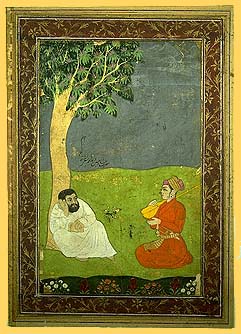
The Mughal Legacy:
The Golden Age of Northern India, 1526-1858
The greatest flourishing of northern Indian culture, art, and imperial strength undoubtedly took place during the reign of the Mughal monarchs of the 16th and 17th centuries. The Mughals were Central Asian descendents of the great Mongol warriors Ghengis Khan and Timur (Tamerlane), whose hordes of cavalry swept across the Eurasian steppe in the 13th and 14th centuries, conquering everything between Beijing and Budapest. But by the turn of the 16th century, the great Mongol empire has splintered; the many royal descendents of Ghengis and Timur fought over the territorial scraps and did their best to hold on to their own minor sultanates.
One of these sultans, Babur, was not satisfied with his small kingdom of Ferghana (now in modern-day Kyrgystan and eastern Uzbekistan), and he tried and tried again to permanently reconquer Timur's greatest prize, Samarkand. He never succeeded. So instead, Babur turned his attention south to the sultanate of Delhi in northern India, which had been ruled successively by five dynasties of muslim warriors from Afghanistan since the late 12th century. As history would show, Babur's campaign against the Delhi sultanate catalyzed the foundation of one of the greatest dynasties in the history of south Asia: the Mughal Empire.
To learn more about the Mughals and their accomplishments, please select from the following six monarchs who as a whole represent the zenith of Mughal power and culture.
Above Picture: The Emperor Jahangir, as a Youth, Visiting a Holy Man.
The Krannert Art Museum, Champaign, Illinois
Return to Andy's Subcontinental Adventure
